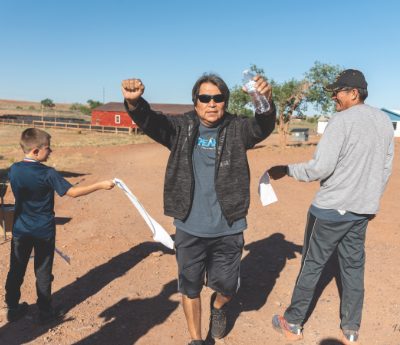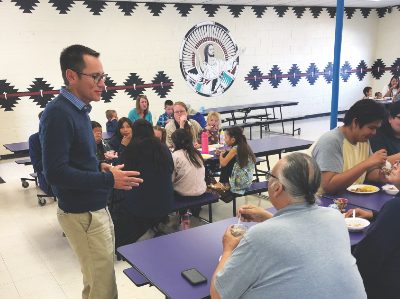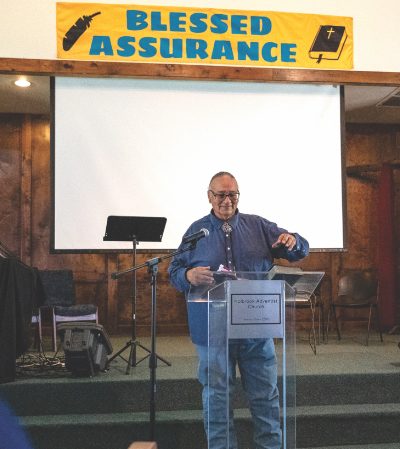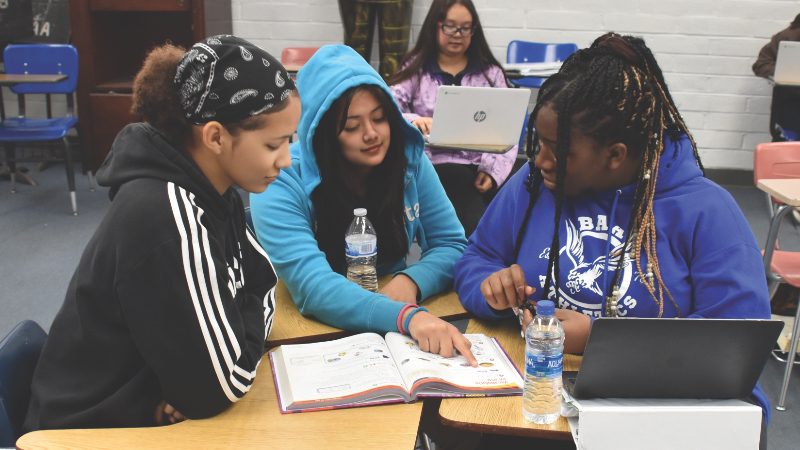As with so many events over the past three years, the Arizona Conference Native American Camp Meeting has been on hiatus. The Native population took the opportunity May 20 to 22 to come together and fellowship on the campus of Holbrook Indian School.

“Most Native American Adventists worship in very small congregations, and some live where there is no Adventist church,” said Pastor Dale Wolcott, who serves as both the Arizona Conference Native American Ministries director and pastor of the Chinle church. “General gatherings bring believers together and reinforce the reality that we are a part of a global family,” he continued.
Weeks prior to the camp meeting, each of the Diné Adventist Radio contacts were mailed an invitation to attend camp meeting. In addition to the Adventist members from the Native churches, three radio listeners attended the meeting, including two who had never been around Adventists before. Another attendee had graduated from Holbrook Indian School in 1993 but had never been connected to the church and returned to the campus for the first time since leaving. Over 120 people participated in the camp meeting program on Sabbath. Sunday morning many of the attendees woke up early to run in the fun run course laid out by Pastor Jonathan Chitwood.
The Native American Ministries team is comprised of three pastoral teams: Dale and Nancy Wolcott in Chinle, Arizona; James and Nancy Crosby in Page, Arizona; and Jonathan and Katie Chitwood in Window Rock, Arizona. Along with the administration and staff at Holbrook Indian School, these teams work in a region that resembles more of a mission field than a traditional church district. The Navajo Reservation is a large geographic area, and it is so rural that the pastoral teams are very isolated.

One of the spiritual challenges of the work in the Native community is bridging the gap between Christianity and Native culture. Hermus Poor Thunder, who taught the Sabbath School lesson at camp meeting, shared his insight on this issue. “There is a point of disconnect between our culture and Christianity,” he said. “I thought, ‘There has to be something in between.’” Poor Thunder, who is Lakota from South Dakota, attended Holbrook Indian School and now works on the Pine Ridge Reservation in South Dakota.
“I am Lako…which means ‘of the way,’ and didn’t Jesus say, ‘I am the Way’?” he reflected. “I found that our culture and the Bible can intersect.” Referring to the legends of Star Boy and the Thunderbirds and the visions of tribal leaders that mirror aspects of the great controversy, Poor Thunder sees a way to connect Native peoples with Jesus.

Part of the celebration of the weekend took place when the $20,000 matching campaign was met for the Diné Adventist Radio station. A donor’s challenge was met by the end of the weekend, and $20,000 was raised that will go toward building and maintaining the radio station. Pastor Chitwood illustrated the impact radio can have as he told the congregation about driving far out into the reservation to visit a home with no electricity or running water. “As I got out of the car, I heard the unmistakable sounds of a radio playing from inside the house,” he said.
Sabbath afternoon featured a time of personal testimony. Throughout the weekend, individuals expressed a feeling of loss. They live in a community that faces ongoing issues with alcohol and drugs, serious health issues associated with substance abuse, and the loss of life experienced during the COVID-19 pandemic. The Native American camp meeting was more than just a get-together of fellow believers. It was a time to weep, rejoice, and strengthen belief and faith.
“I was delighted to see the way people interacted, especially after the isolation of COVID,” reflected Pastor Wolcott. “God is so good.”
____________________
By Jeff Rogers





